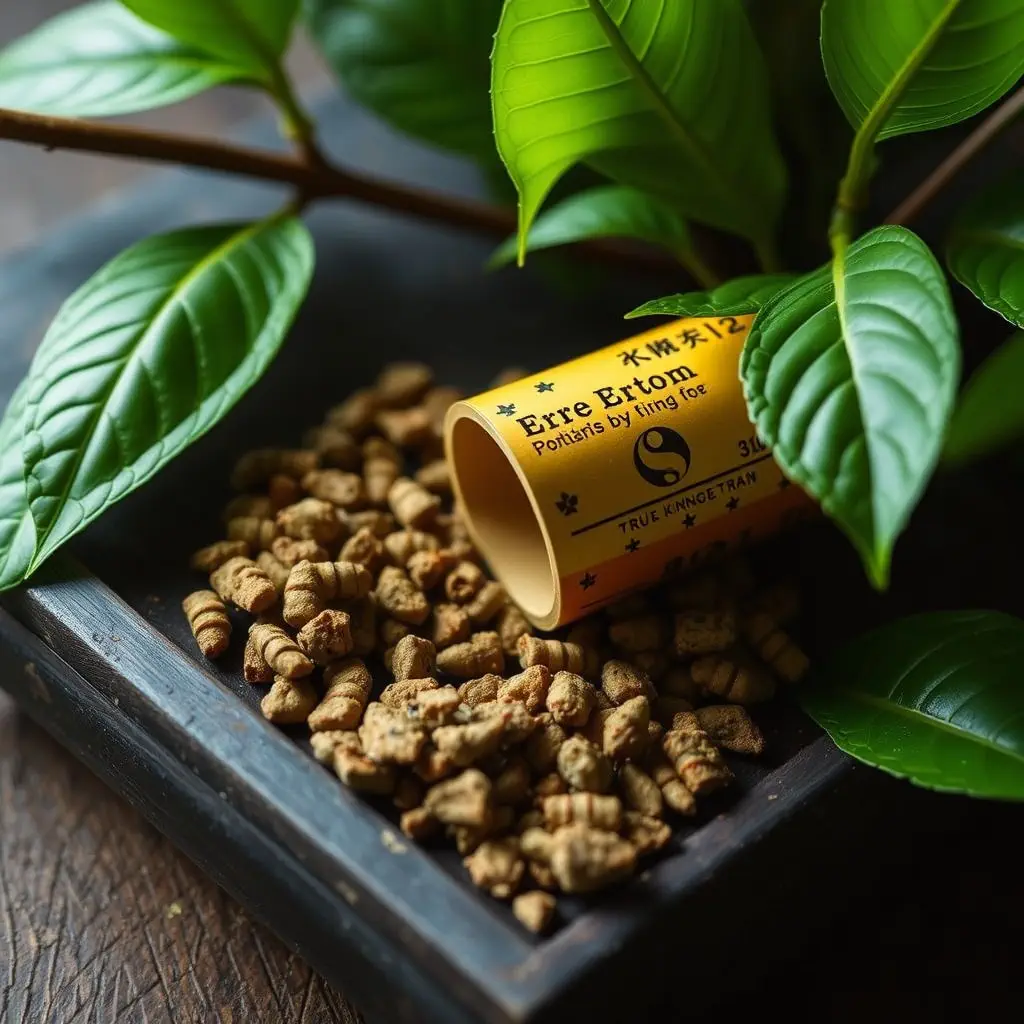The lotus blue flower kratom is a natural remedy for muscle soreness, particularly Delayed Onset Muscle Soreness (DOMS), which many experience after intense physical activity. This strain contains alkaloids like mitragynine and 7-hydroxymitragynine that may interact with opioid receptors to provide pain relief. Users often find it offers a balance of energy and calmness, potentially aiding in recovery while easing discomfort. While it's praised for its analgesic properties, it's important to approach its use cautiously due to potential interactions with other medications and varying legal statuses by region. It's crucial to consult healthcare professionals before incorporating kratom into any pain management strategy. Ongoing research explores its efficacy and mechanisms, but more clinical trials are needed to fully understand its benefits for muscle soreness relief. Safety measures include starting with a low dosage, verifying product potency from reputable sources, and monitoring personal reactions. To minimize risks of dependency or adverse effects, it's advisable to use kratom only temporarily and under medical guidance.
Muscle soreness, a common occurrence after intense physical activity, can hinder recovery and affect overall well-being. Whether from exercise, injury, or strenuous work, finding effective relief is paramount for resuming normal activities. In this article, we delve into the natural remedy offered by the lotus blue flower, commonly known as kratom, and its potential to alleviate muscle soreness. We will dissect the science behind muscle pain and how kratom might intervene, emphasizing safe usage practices. Join us as we explore the benefits of this botanical compound for natural muscle soreness relief.
- Understanding Muscle Soreness and Its Causes
- Exploring the Role of Kratom from the Lotus Blue Flower in Muscle Soreness Relief
- Safe Practices and Considerations When Using Kratom for Muscle Soreness Alleviation
Understanding Muscle Soreness and Its Causes

Muscle soreness, often referred to as delayed onset muscle soreness (DOMS), can occur after intense physical activity, particularly when engaging in unfamiliar exercises or after a period of inactivity. The mechanisms underlying muscle soreness are multifactorial and involve muscle damage, inflammation, and metabolic stress. Understanding the causes of this discomfort is crucial for effective management and recovery. Physical exertion beyond what the muscles are accustomed to can lead to microtrauma within the muscle fibers, triggering the body’s natural healing response which may result in soreness. This response is designed to repair and strengthen the muscles but can be uncomfortable during the process. Additionally, the accumulation of waste products like lactic acid during strenuous activity can also contribute to muscle soreness, creating an environment that can exacerbate discomfort.
In the realm of natural remedies for muscle soreness, kratom, particularly strains like the lotus blue flower, is gaining attention for its potential analgesic properties. Kratom contains alkaloids such as mitragynine and 7-hydroxymitragynine, which are thought to interact with the body’s opioid receptors, providing pain relief and muscle relaxation. The lotus blue flower kratom strain is believed to offer a balance between energy and calmness, potentially aiding in recovery while alleviating soreness. Users often report its efficacy in managing mild to moderate pain, which could be beneficial for those experiencing muscle soreness from exercise or other physical activities. However, it is important to approach the use of kratom with caution, as it can interact with medications and has legal considerations depending on the region. Always consult with a healthcare provider before incorporating kratom into your wellness regimen.
Exploring the Role of Kratom from the Lotus Blue Flower in Muscle Soreness Relief

The lotus blue flower, a strain of kratom known for its unique alkaloid profile, has garnered attention within the realm of natural remedies for muscle soreness. Traditionally revered in herbal medicine practices, this strain is believed to possess properties that may help alleviate discomfort associated with physical exertion. The primary active compounds found in kratom, namely mitragynine and 7-hydroxymitragynine, are thought to interact with the body’s opioid receptors, potentially offering pain-relieving effects. Users report that the lotus blue flower kratom can provide a soothing sensation that may reduce muscle tension and soreness, making it a popular choice post-workout or for those experiencing chronic pain conditions.
Research into the efficacy of kratom, specifically the lotus blue flower strain, for muscle soreness is ongoing, with studies exploring its pharmacological effects and mechanisms of action. Preliminary findings suggest that this strain may offer significant relief from muscle aches and pains due to its potential analgesic properties. However, it is crucial for individuals to consult healthcare professionals before incorporating kratom into their regimen, as the substance’s interactions with other medications and its long-term effects on health are not yet fully understood. The lotus blue flower kratom warrants further investigation to elucidate its full potential in the context of muscle soreness relief.
Safe Practices and Considerations When Using Kratom for Muscle Soreness Alleviation

When integrating kratom into a regimen for muscle soreness relief, it is imperative to approach its use with caution and informed guidance. Kratom, derived from the leaves of the Mitragyna speciosa tree, which is sometimes referred to as the lotus blue flower due to its distinctive blossoms, has been traditionally used in certain cultures for its potential wellness benefits. For muscle soreness, some individuals report positive outcomes when using kratom strains known for their pain-relieving properties, such as the lotus blue flower variant. It is crucial to start with a low dosage to gauge individual sensitivity and effects, as the optimal dose can vary significantly from person to person. Additionally, due to the herb’s interaction with the body’s opioid receptors, it should be used judiciously to avoid dependency or adverse reactions.
Safety is paramount when experimenting with kratom for muscle soreness. It is advisable to consult with a healthcare provider before incorporating kratom into any health regimen, especially if one has pre-existing health conditions or is currently taking other medications. Quality control is also a concern, as the market may contain variably potent products; therefore, sourcing kratom from reputable vendors who provide third-party lab results for purity and dosage accuracy is highly recommended. Regular monitoring of one’s physical response to kratom is essential, and any unusual symptoms should prompt immediate medical attention. Moreover, it is wise to limit the duration of kratom use to prevent the development of tolerance or dependence, ensuring that its potential benefits can be fully realized without compromising long-term health.
Muscle soreness, a common experience after intense physical activity, can be mitigated through various means. Among these, the lotus blue flower, commonly known as kratom, has gained attention for its potential benefits in muscle soreness relief. This article has explored the mechanisms behind muscle soreness and examined the role of kratom, with a focus on Lotus Blue’s high-quality product offerings. It is clear that when used judiciously, kratom may aid in alleviating discomfort post-exercise. However, it is imperative to adhere to safe practices, as individual responses to kratom can vary. Users should always consult with healthcare professionals before incorporating kratom into their wellness regimen, ensuring a balanced and informed approach to health and fitness. Lotus Blue’s commitment to providing high-standard products underscores the importance of responsible use for those seeking natural relief from muscle soreness.






